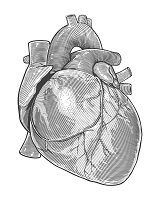Study: Wavefront Pacing Key to Accurate Images in Heart
Wavefront pacing affects accuracy in voltage mapping scars in the heart, UCLA researchers report.

Wavefront pacing affects the accuracy of mapping scars in the heart.
University of California Los Angeles researchers reported on techniques in the ablation of scar-related ventricular tachycardia. The work, led by Roderick Tung, MD, assistant professor of medicine at UCLA and a cardiologist at UCLA’s Ronald Reagan Medical Center, focused on the effects of varying pacing wavefronts in delineating these scars.
Ten patients underwent voltage mapping to delineate left ventricular scar with two paced wavefronts. In all patients, low voltage areas were detected but difference in scar regions and areas were seen when he compared LV paced and RV paced maps.
An analysis of electrograms demonstrated voltage changes of up to 2mV from the same site with different paced wavefronts.
That showed that “further studies are needed to determine the optimal wavefront for scar detection, Tung wrote in a poster abstract to be presented Sunday, March 15 at the American College of Cardiology meeting in San Diego.
“Significant differences in scar characterization are seen with different pacing wavefronts,” he said.
In patients with m minimal or no low voltage regions seen during substrate mapping, a second wavefront may increase the sensitivity to detect scar.”